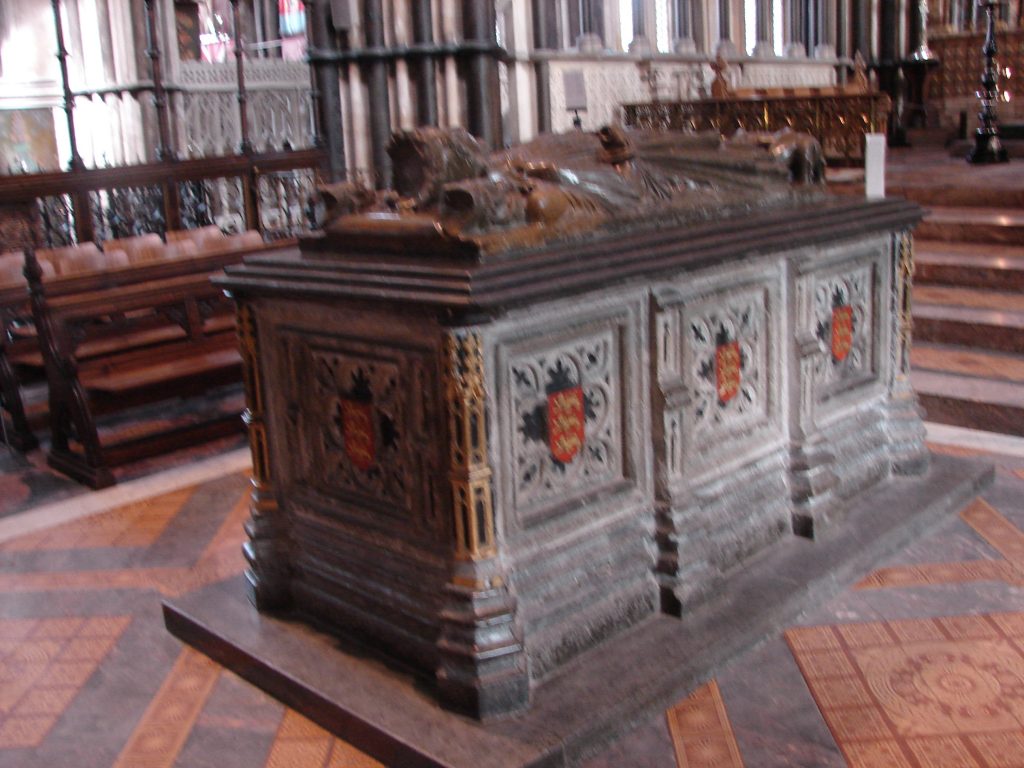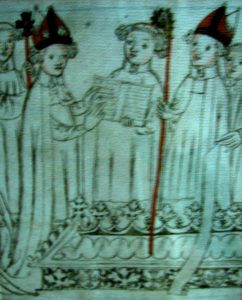 King Richard’s Sword, the sixth book in my Lady Apollonia West Country Mysteries, is set in the city of Worcester in the years 1399-1400. As mentioned in my last posting, Worcester has been the seat of a bishop since before the end of the first millennium. A diocese was founded, and Bosel was consecrated as first bishop in 680 although there had probably been a Roman Christian community with a church on this site since the 4th century. The first cathedral was dedicated to Saint Peter.
King Richard’s Sword, the sixth book in my Lady Apollonia West Country Mysteries, is set in the city of Worcester in the years 1399-1400. As mentioned in my last posting, Worcester has been the seat of a bishop since before the end of the first millennium. A diocese was founded, and Bosel was consecrated as first bishop in 680 although there had probably been a Roman Christian community with a church on this site since the 4th century. The first cathedral was dedicated to Saint Peter.
Around 981, Saint Oswald became bishop and built a new cathedral dedicated to Saint Mary, and it stood next to Saint Peter’s until after the Norman Conquest. Oswald also founded a Benedictine priory at Saint Mary’s, so the church served the priory and as the Cathedral of Worcester. This remained the case for hundreds of years including the time of my novel and beyond into the 16th century when King Henry VIII dissolved the monasteries.
The cathedral was known as Worcester Priory before the English Reformation when the Diocese of Worcester also included the present Diocese of Gloucester. The picture above shows the tomb of King John I in the Quire of the church. As a monastic cathedral, it was included as one of England’s monastic cathedrals about which I posted on August 3, 2016. After the Dissolution of the monasteries, it has continued to be a cathedral to the present. Now it is known officially as the Cathedral Church of Christ and the Blessed Mary the Virgin of Worcester.
In 1062 Saint Wulfstan, already serving as Prior of Worcester, was appointed Bishop of Worcester serving until his death in 1095. He was the last of the English, pre-Norman Conquest bishops when he died. Under his tutelage, the number of monks increased from ten to fifty. Wulfstan also developed a plan for the monastic buildings. I will say more about them in my next posting.
There is an interesting story of how Wulfstan retained his bishopric after the Norman Conquest. William the Conqueror, wanted to replace Anglo-Saxon bishops with Normans of whose loyalty he could be sure. At a meeting in Westminster Abbey, the new Norman Archbishop Lanfranc therefore tried to replace Wulfstan as Bishop of Worcester. Legend says Lanfranc ordered Wulfstan to surrender his bishop’s staff and ring. Wulfstan refused to remove the ring, saying he would wear it to the grave. He placed the staff on the tomb of King Edward the Confessor, saying he yielded it to the king who made him a bishop and that St Edward ‘will surrender it to whom he chooses’. The new appointee could not pick up the staff, which remained miraculously attached to the tomb until Wulfstan picked it up – and was allowed to continue as bishop. In the drawing on the right from Trinity College, Cambridge Archbishop Lanfranc, left, reads while Wulfstan, holding his staff, listens.
 Wulfstan was canonised in 1203, and his tomb, as well as Oswald’s, became important places for pilgrims to visit. I posted a blog article on Saint Wulfstan on October 10, 2016. Another important burial at Worcester was that of King John in 1216. The king’s tomb is pictured above left.
Wulfstan was canonised in 1203, and his tomb, as well as Oswald’s, became important places for pilgrims to visit. I posted a blog article on Saint Wulfstan on October 10, 2016. Another important burial at Worcester was that of King John in 1216. The king’s tomb is pictured above left.
For more on Worcester Cathedral, click on
http://www.worcestercathedral.co.uk/Heritage.php or on
https://en.wikipedia.org/wiki/Worcester_Cathedral or on
http://www.british-history.ac.uk/vch/worcs/vol4/pp394-408
Tags: Chaucer's England, historical fiction, medieval mysteries